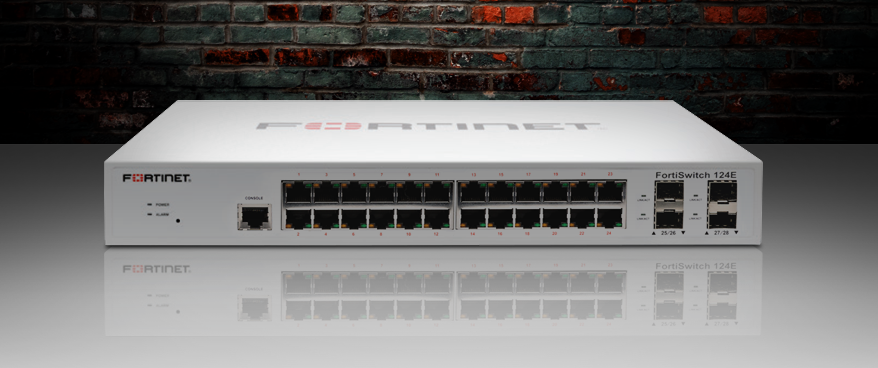
The new FortiSwitch 124E PoE switch is Fortinet’s new Layer 2 networking appliance. We are going to look at it’s performance, but first, a few words on switches generally.
A switch is a device that takes in packets of data being sent by devices that connect to its physical ports and sends them out again. However, it sends them only through the ports that lead to the devices the packets are intended to reach. In other words, switches connect Ethernet IP devices and forward information between them. In it’s simplest form, an unmanaged switch is a fancy ethernet hub, and can be had quite cheaply. As such, an unmanaged switch requires no configuration. They are typically for basic connectivity.
On the other hand, a managed switch is communicates across multiple networks while simultaneously providing built-in network security and improving the network’s bandwidth by prioritizing packet requests.
Why a managed switch?
There is no ability to configure an unmanaged network switch because it lacks a “brain.” A managed switch gives you the ability to manually configure, monitor, and manage the devices on your network.
The reason an organization would spend good money on a managed switch with all these heavy-duty features is simply this: managed switches give you greater security, more features, and flexibility. Consequently, you can configure them to custom-fit your network. With this greater control, you can better protect your network and improve the quality of service for those who access the network.
Plus, a managed switch Like the FS 124E has more software on it that allows the user to have more control over their network. For example, you can use it to control the LAN to create VLANs (Virtual Local Area Networks).
In addition, these switches provide network status, diagnostics, and data prioritization. And, unauthorized devices cannot connect to the network, thus preventing malicious threats.
How do I manage all these functions?
A good switch should be simple to set up and manage. The FortiSwitch 124E (and all FortiSwitches) is tightly integrated into the Fortinet Security Fabric via FortiLink, an innovative proprietary management tool. This allows any FortiGate firewall to seamlessly manage any FortiSwitch. This enables it to become a logical extension of the FortiGate. As a result, the 124E is integrated directly into the Fortinet Security Fabric. At that point, the FortiSwitch can be managed directly from the familiar, easy-to-grasp FortiGate interface. The nice thing is, it’s a “single pane of glass” interface, and provides complete visibility and control of users and devices on the network no matter how they connect.
The integration between the FortiGate and FortiSwitch — the reporting and monitoring — is superb. One of the most valuable features is that you can completely isolate devices that are compromising the network.
Performance of the FortiSwitch 124E
The FS-124E has 24 GE RJ45, and 4 GE SFO ports. It delivers 56 Gbps of Switching Capacity, and 83 Mpps Packets per Second. Additionally, it has 4 ms latency. Lastly, it supports 4000 VLANS. A FortiGate firewall will be able to manage anywhere from 8 to 300 FortiSwitches, depending on the model.
Who is the FS-124E designed for?
The 124E is ideal in converged network environments; enabling voice, data and wireless traffic to be delivered across a single network. Specifically it will suit threat-conscious small to mid-sized businesses and branch offices.
Networks today are essential for supporting businesses, providing communication, delivering entertainment—the list goes on and on. And building a small business network is not possible without switches to tie devices together. It unites the computers, printers, and servers in a small business network seamlessly and safely.
So if you have any questions, give Corporate Armor a call at 877-449-0458 or email us at [email protected].
